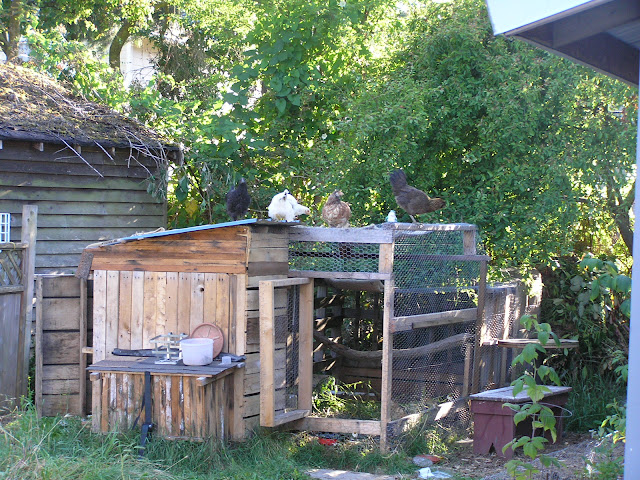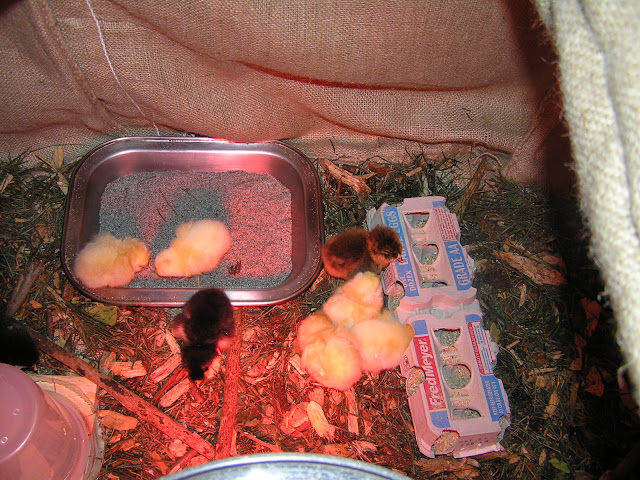How to Make Microwave Popcorn in a Bowl
This is the easiest thing ever: Make popcorn right in the bowl you're going to serve it in. You don't need to do it in a paper bag, you don't need any chemical-laden, pre-measured packets from the store, and you don't need a space-hogging kitchen appliance just for popping corn.

I use blue popcorn. This will work with any variety of popcorn!
Measure out 1/3 c of popcorn kernels into a large microwave-safe bowl. I just use a glass mixing bowl, probably with a 1 gallon capacity. You may want to vary the amount of corn you use depending on the size of your bowl or the size of your microwave.

If you just want to make a single serving, use 2 Tb corn in a large soup bowl. This has been great for when my kids want to snack on some popcorn. I can make exactly as much as we want with really no hassle.
We've always popped our popcorn on its own, and then added seasonings after popping, but based on reader suggestions (thanks, guys!) after publishing this article, I've started adding oil & salt before popping. I use about 2 Tb oil and several grinds of sea salt, stir it into the kernels, and then pop as normal. I think it gives the popcorn a great texture to pre-season it, but it works both ways.
Whatever size bowl you use, just make sure you have a microwave safe plate that fits over the top. The plate will keep the popcorn in while letting steam out.

Microwave, covered with the plate, for about 3 to 4 1/2 minutes. Stay within earshot of the microwave during the last couple minutes, and pull it out as soon as the pops reduce in frequency to about 1 every 3 seconds. If you've ever made microwave popcorn before, it's the same thing here. If you let it go too long, it will burn, but you'll have a lot of unpopped kernels if you pull it out too soon.

Our favorite way to dress popcorn is with melted butter or olive oil, nutritional yeast, and soy sauce or Bragg liquid aminos. Add whatever you like to your popcorn and enjoy!
We buy our bulk organic popcorn from Azure Standard, a natural foods distributor. Below are Amazon Affiliate Ads. Any purchase made through them helps support our family. Thanks in advance!

I use blue popcorn. This will work with any variety of popcorn!
Measure out 1/3 c of popcorn kernels into a large microwave-safe bowl. I just use a glass mixing bowl, probably with a 1 gallon capacity. You may want to vary the amount of corn you use depending on the size of your bowl or the size of your microwave.

If you just want to make a single serving, use 2 Tb corn in a large soup bowl. This has been great for when my kids want to snack on some popcorn. I can make exactly as much as we want with really no hassle.
We've always popped our popcorn on its own, and then added seasonings after popping, but based on reader suggestions (thanks, guys!) after publishing this article, I've started adding oil & salt before popping. I use about 2 Tb oil and several grinds of sea salt, stir it into the kernels, and then pop as normal. I think it gives the popcorn a great texture to pre-season it, but it works both ways.
Whatever size bowl you use, just make sure you have a microwave safe plate that fits over the top. The plate will keep the popcorn in while letting steam out.

Microwave, covered with the plate, for about 3 to 4 1/2 minutes. Stay within earshot of the microwave during the last couple minutes, and pull it out as soon as the pops reduce in frequency to about 1 every 3 seconds. If you've ever made microwave popcorn before, it's the same thing here. If you let it go too long, it will burn, but you'll have a lot of unpopped kernels if you pull it out too soon.

Our favorite way to dress popcorn is with melted butter or olive oil, nutritional yeast, and soy sauce or Bragg liquid aminos. Add whatever you like to your popcorn and enjoy!
We buy our bulk organic popcorn from Azure Standard, a natural foods distributor. Below are Amazon Affiliate Ads. Any purchase made through them helps support our family. Thanks in advance!
















